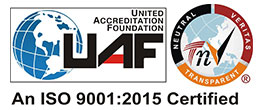1. IDENTIFICATION OF THE MATERIAL AND SUPPLIER
SUPPLIER NAME : M/s. MAXWORTH MINRALS TRADING PVT. LTD.,
ADDRESS : D No. 48-14-116/6,
4TH FLOOR, LAKSHMI ROYAL PLAZA,
RESAPUVANIPALEM,
VISKAHAPATNAM: 530003, AP, INDIA
Telephone Number : (91) 891 256 6263
E-MAIL : enquiry@maxworthgroup.com.au
Web : www.maxworthgroup.com.au
MSDS DATE: 05.01.2018
SYNONYMS : FGA, FINE GRADE ASH, FLY ASH
USES : ASPHALT ADDITIVE, CEMENT ADDITIVE, CONCRETE ADDITIVE, CONSTRUCTION FILLER, INDUSTRIAL APPLICATIONS, RAW MATERIAL, SOIL STABILIZATION.
2. HAZARDOUS IDENTIFICATION : CLASSIFIED AS NON HAZARDOUS ACCORDING TO ASCC CRITERIA
RISK PHRASES :
R20 : HARMFUL BY INHALATION.
R36/37/38 : IRRITATING TO EYES, RESPIRATORY SYSTEM AND SKIN
R40 : LIMITED EVIDENCE OF CARCINOGENIC EFFECT
R48/20 : HARMFUL DANGER OF SERIOUS DAMAGE TO HEALTH BY PROLONGED THROUGH INHALATION.
SAFETY PHRASES :
S22 : DO NOT BREATH DUST
S24/25 : AVOID CONTACT WITH SKIN AND EYES
S36/37/39 : WEAR SUIATBLE PROTECTIVE CLOTHING, GLOVES AND EYE/FACE PROTECTION.
S38 : IN CASE OF INSUFFICIENT VENTILLATION, EAR SUIATBLE RESPIRATORY EQUIPMENT
S51 : USE ONLY IN WELL VENTILATED AREAS
NOT CLASSIFIED AS A DANGEROUS GOOD BY THE CRITERIA OF THE ADG CODE
UN NO. : NONE ALLOCATED
PACKING GROUP : NONE ALLOCATED
DG CLASS : NONE ALLOCATED
HAZCHEM CODE : NONE ALLOCATED
SUBSIDIARY RISKS(S) : NONE ALLOCATED
EPG : NONE ALLOCATED
3. COMPOSITION / INFORMATION ON INGREDIENTS :
| Ingredient | Formula | CAS No. | Content |
|---|---|---|---|
| QUARTZ (SILICA CRYSTALLINE) | Si-O2 | 14808-60-7 | 60-70% |
| CALCIUM OXIDE | Ca-O | 1305-78-8 | <12% |
| IRON OXIDE | Fe2-O3 | 1309-37-1 | <4% |
| ALUMINIUM OXIDE | AL2-O3 | 1344-28-1 | 10-20% |
| MAGNESIUM OXIDE | MG-0 | 1309-48-4 | <1% |
4. FIRST AID MEASURES :
| Eye |
If in eyes, hold eyelids apart and flush continuously with running water. Continue flushing until advised to stop by a poisons information centre, a doctor, or for at least 15 minutes. |
| Inhalation |
If inhaled, remove from contaminated area. Apply artificial respiration if not breathing. |
| Skin |
If skin or hair contact occurs, remove contaminated clothing and flush skin and hair with running water. Continue flushing with water until advised to stop by a poisons information centre or a doctor. |
| Ingestion |
For advice, contact a poisons information centre on 13 11 26 (Australia Wide) or a doctor (at once). If swallowed, do not induce vomiting. |
| Advice to Doctor |
Treat symptomatically |
5. FIREFIGHTING MEASURES :
| Flammability |
Non Flammable. May evolve toxic gases if strongly heated. |
| Fire and explosion |
No fire or explosion hazard exists. |
| Extinguishing |
Prevent contamination of drains or waterways. |
| Hazchem code |
None allocated |
6. ACCIDENTAL RELEASE MEASURES :
| Spillage |
Contact emergency services if required. Use personal protective equipment. Clear areas of all unprotected personnel. Ventilate area where possible. Contain spillage, then cover / absorb spill with non-combustible absorbent material (vermiculite, sand, or similar), collect and place in suitable containers for disposal. Avoid generating dust. |
7. STORAGE AND HANDLING :
| Storage |
Store tightly sealed in a cool, dry, well ventilated area, removed from acids, alkalis, heat or ignition sources and food stuffs. Ensure containers are adequately labeled, protected from physical damage and sealed when not in use. Check regularly for leaks or spills. |
| Handling |
Before use carefully read the product label. Use of safe work practices are recommended to avoid eye or skin contact and inhalation. Observe good personal hygiene, including washing hands before eating. Prohibit eating, drinking and smoking in contaminated areas. |
8. EXPOSURE CONTROLS / PERSONAL PROTECTION :
| Exposure Stds | Ingredient | Reference | TWA | STEL | ||
| ppm | Mg M3 |
ppm | Mg M3 |
|||
| Silica, Crystalline Quartz | ASCC (AUS) | – | 0.1 | – | – | |
| Biological limits | No biological limit allocated | |||||
| Engineering Controls | Avoid inhalation. Use in well ventilated areas. Where an inhalation risk exists, mechanical extraction ventilation is recommended. Maintain dust levels below the recommended exposure standard. | |||||
| PPE | Wear dust-proof goggles and rubber or PVC gloves. When using large quantities or where heavy contamination is likely, wear: coveralls. At high dust levels, wear: a Full-face class P3 (Particulate) or an Air-line respirator. Where an inhalation risk exists, wear: a class P1 (Particulate) respirator. | |||||
9. PHYSICAL & CHEMICAL PROPERTIES
| Appearance | GRAY POWDER | Solubility (water) | < 50 g/L |
| Odour | ODOURLESS | Specific Gravity | 2.15 to 2.25 |
| Ph | 3 to 4 | % Volatiles | < 2% |
| Vapour Pressure | Not available | Flammability | Non Flammable |
| Vapour Density | Not available | Flash point | Not relevant |
| Boiling Point | Not available | Upper explosion limit | Not relevant |
| Melting Point | >1600 oC | Lower explosion limit | Not relevant |
| Evaporation Rate | Not available | ||
| Bulk density | 800-1000 Kg/m3 |
10. STABILITY & REACTIVITY
| Chemical stability | Stable under recommended conditions of storage |
| Conditions to avoid | Avoid contact with incompatible substances. |
| Material to avoid | Incompatible with acids (e.g. nitric acid) and alkalis (e.g. hydroxides) |
| Decomposition | May evolve toxic gases if heated to decomposition. |
| Hazardous reactions | Polymerization is not expected to occur. |
11. TOXICOLOGICAL INFORMATION
| Health hazard summary | Irritant. Use safe work practices to avoid eye or skin contact and inhalation. Chronic exposure to crystalline silica may result in lung fibrosis (silicosis). However, due to the low levels of crystalline silica, chronic health effects are not anticipated with normal use. Crystalline silica is classified as carcinogenic to humans (IARC Group 1) |
| Eye | Irritant. Contact may result in irritation, lacrimation, pain, redness and conjunctivitis. May result in burns with prolonged contact. |
| Inhalation | High Chronic toxicity – irritant. Over exposure to dust may result in mucous membrane irritation of the respiratory tract. Chronic exposure to crystalline silica may result in silicosis (lung fibrosis). Crystalline silica is classified as carcinogenic to humans (IARC Group 1). |
| Skin | Irritant. Contact may result in irritation, redness, pain and rash. May cause sensitization by skin contact |
| Ingestion | Low to moderate toxicity. Ingestion may result in gastrointestinal irritation, nausea, vomiting, abdominal pain and diarrhoea. |
| Toxicity data | Quartz (Silica Crystalline) (14808-60-7) LCLo (Inhalation) : 300 ug/m3/10 years (human) LDLo (Intravenous) : 200 mg/kg (rat) LDLo (Intravenous) : 20 mg/kg (dog) TCLo (Inhalation) : 16 000 000 particles / ft3/8 hours/17.9 years (human-fibrosis) |
12. ECOLOGICAL INFORMATION
| Environment | The main component/s of this product are not anticipated to cause any adverse effects to plants or animals. |
13. DISPOSAL CONSIDERATION
| Waste disposal | Ensure product is covered with moist soil to prevent dust generation and dispose to approved council landfill. Contact the manufacturer if additional information is required. |
| Legislation | Dispose of in accordance with relevant local legislation |
14. TRANSPORT INFORAMATION
| NOT CLASSIFIED AS A DANGEROUS GOOD BY THE CRITERIA OF THE ADG CODE | ||
| Shipping Name : None allocated | ||
| UN No. None allocated | DG Class : None allocated | Subsidiary Risk(s): None allocated |
| Packing group : None allocated | Hazchem group : None allocated | EPG : None allocated |
15. REGULATORY INFORMATIONS
| Poison Schedule | A poison schedule number has not been allocated to this product using the criteria in the standard for the uniform scheduling of drugs and poisons (SUSDP) |
| AICS | All chemicals listed on the Australian Inventory of Chemical substances (AICS) |
16. OTHER INFORMATION
| Additional Information | Crystalline silica is present in Fly Ash as an impurity. The amount depends on the crystalline silica content of the source coal. ALUMINO SILICATES: When alumina silicates have been exposed to service temperatures exceeding 982o C for prolonged periods, cristobalite, a form of crystalline silica may be formed. Exposure to cristobalite dust may cause pulmonary fibrosis-silicosis. A hazard is only anticipated during demolition of used refractory materials. Cristobalite is classified as carcinogenic to humans (IARC Group 1). RESPIRATORS: In general the use of respirators should be limited and engineering controls employed to avoid exposure. If respiratory equipment must be worn ensure correct respirator selection and training is undertaken. Remember that some respirators may be extremely uncomfortable when used for long periods. The use of air supplied respirators should be considered where prolonged or repeated use is necessary. ABBREVIATIONS: ADB – Air Dry basis BEI-Biological exposure indices(s) CAS# – Chemical abstract service number-used to uniquely indentify chemical compounds CNS – Central Nervous System EINECS – European inventory of existing commercial chemical substances IARCS – International agency for research on cancer M – moles per ltr, a unit of concentration. Mg/m3 – Milligrams per cubic mtr NOS – Not otherwise specified NTP – National toxicology program OSHA – Occupational safety fir health administration pH – relates to hydrogen ion concentration using a scale of 0(high acidic) to 14 (highly alkaline) ppm – Parts per million RTECS – registry of toxic effects of chemical substances TWA/ES -Time weighted average or exposure standard. HEALTH EFFECTS FROM EXPOSURE : It should be noted that the effects from exposure to this product will depend on several factors including: frequency and duration of use; quantity used; effectiveness of control measures; protective equipment used and method of application. Given that it is impractical to prepare a Chem Alert report which would encompass all possible scenarious, it is anticipated that users will assess the risks and apply control methods where appropriate. PERSONAL PROTECTIVE EQUIPMENT GUIDELINES : The recommendation for protective equipment contained within this Chem Alert is provided as a guide only. Factors such as methods of application, working environment, quantity used, product concentration and the availability of engineering controls should be considered before final selection of personal protective equipment is made. |
| Report Status: | This document has been compiled by RMT on behalf of the manufacturer of the product and serves as the manufacturers safety data sheet (‘SDS’). It is based on information concerning the product which has been provided to RMT by the manufacturer or obtained from third party sources and is believed to represent the current state of knowledge as to the appropriate safety and handling precautions for the product at the time of issue. Further clarification regarding any aspect of the product should be obtained directly from the manufacturer. While RMT has taken all due care to include accurate and up-to-date information in this SDS, it does not provide any warranty as to accuracy or completeness. As far as lawfully possible, RMT accepts no liability for any loss, injury, or damage (including consequential loss) which may be suffered or incurred by any person as a consequence of their reliance on the information contained in this SDS. |
| Prepared by | M/S. MAXWORTH MINERALS TRADING PVT. LTD., D No 48-14-116/6, LAKSHIMI ROYAL PLAZA, FOURTH FLOOR, RESAPUVANIPALEM, VISAKHAPATNAM – 530003, INDIA TEL : (91) 891 256 6263 |









